Text
Battle of San Julián, the First Major Victory for the Cristeros
Mexican federal forces of the 78th Regiment under General Espiridión Rodríguez Escobar arrived at San Julián on 15 March 1927. Cristero soldiers under Victoriano Ramírez and the General-priest José Reyes Vega put up a defense of the town, but the hordes of the Mexican government were superior and were overwhelming the Cristeros. During the battle, federal forces looted homes, raped women, and tortured Cristero prisoners to death.
More federal forces arrived to support Rodríguez Escobar, but around the same time, Cristero reinforcements under General Miguel Hernández came to the rescue. Hernández had his men attack the federal forces in three columns, one from the south and west, one from the east and north, and the last from the southeast which he personally commanded. With Hernández's advance, most of the federal soldiers were killed or captured (and then executed via firing squad). The battle ended in a Cristero victory and a shameful defeat for the government, especially for General Rodríguez Escobar, who survived fleeing the town disguised as a woman.
The defeat made President Plutarco Elías Calles recognize the Cristeros as a genuine threat to his anti-catholic government.
In the picture below, Cristeros celebrating the successful defense of San Julián.
¡Viva Cristo Rey y Nuestra Señora de Guadalupe!

#Cristiada#cristero war#cristeros#viva cristo rey#Cristero#Deus Vult#catholic#Traditional Catholicism#Traditional Mass#mexico
8 notes
·
View notes
Photo
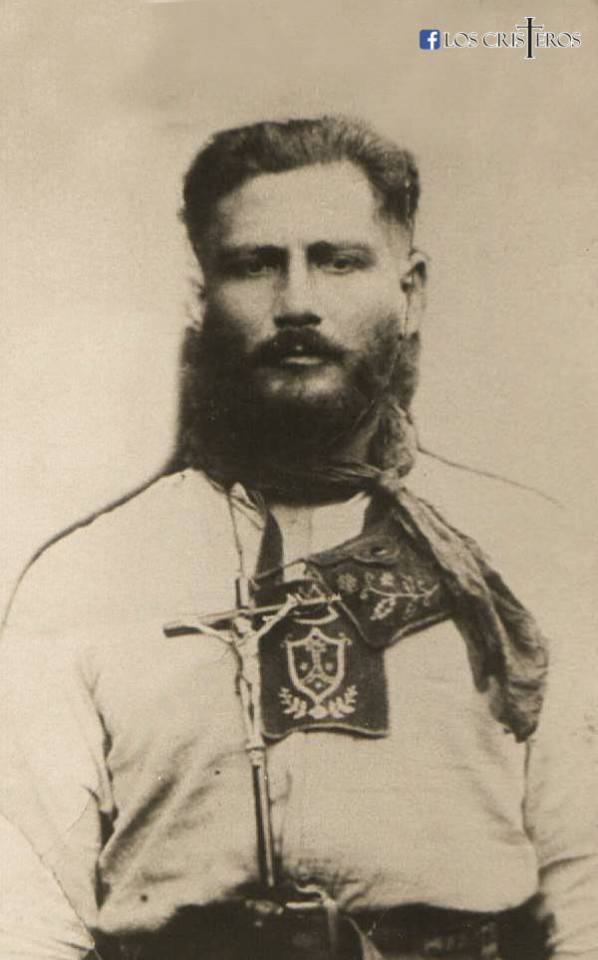
Colonel Manuel Chaparro, Cristero Leader from the Region of Morelia, Michoacán
¡Viva Cristo Rey y Nuestra Señora de Guadalupe!
#Cristero#Cristiada#cristero war#cristeros#viva cristo rey#mexico#catholic#Traditional Catholicism#traditional catholic#Traditional Mass#Deus Vult
26 notes
·
View notes
Photo

Saint Pedro Esqueda Ramírez, martyred during the Cristero War by the Mexican government
¡Viva Cristo Rey y sus mártires!
#Cristero#Cristiada#cristero war#cristeros#viva cristo rey#catholic#traditional catholic#Traditional Mass#mexico
17 notes
·
View notes
Photo

The last Holy Mass in the parish of Valparaíso, Zacatecas, before the suspension of all public worship in Mexico
July 31, 1926
All Mexican Bishops, with the permission and backing of the Holy See, declared a total suspension of cult and worship in the country as a way of protesting the anti-catholic persecution carried out by the government.
One day before this suspension, all across Mexico the parishes, cathedrals, and all places where the Holy Mass was celebrated were filled with millions of Mexicans wanting to hear Mass and receive the Sacraments for the last time.
¡Viva Cristo Rey y Nuestra Señora de Guadalupe!
#Cristero#Cristiada#cristero war#cristeros#viva cristo rey#catholic#Traditional Catholicism#Traditional Mass#traditional catholic#mexico#Deus Vult
38 notes
·
View notes
Photo

Cristero soldiers of Colonel Candelario Villegas.
Guanajuato. November, 1927.
¡Viva Cristo Rey y Nuestra Señora de Guadalupe!
#Cristero#Cristiada#cristero war#cristeros#viva cristo rey#catholic#Traditional Catholicism#Traditional Mass#mexico
40 notes
·
View notes
Text
March 30, 1927, martyrdom of Saint Julio Álvarez Mendoza

When the Church in Mexico was persecuted by the judeo-masonic government of Plutarco Elías Calles, Father Álvarez, a humble parish priest, began celebrating Holy Mass in the nearby farms and baptizing in the mountain streams in total secret. When he became aware that his brother priests were being persecuted throughout the country, he did not believe himself worthy of martyrdom.
One day, Father Álvarez was captured by Federal forces when he was traveling to a ranch to celebrate the Holy Sacrifice of the Mass. He was immediately sent to the prison of San Julián, Jalisco, where the priest was subjected to cruel torture.
Four days later, Father Álvarez stood before the firing squad. He was martyred for the “crime” of being a priest, not before forgiving his executioners. The soldiers then left the martyr’s body in a garbage dump as an insult, but the faithful rescued it and buried it in the parish temple.
Nowadays, Father Julio Álvarez Mendoza is recognized by the Church as a Saint, and many Mexicans go in pilgrimage to the sites where he was imprisoned, martyred, and to his parish of Mechoacanejo where his relics can be venerated.
¡Viva Cristo Rey y sus Mártires!

#Cristero#Cristiada#cristero war#cristeros#viva cristo rey#catholic#traditional catholic#Traditional Mass#crusades#Deus Vult#mexico
11 notes
·
View notes
Text
The three armies the Mexican government used to fight the Cristeros and persecute innocent Catholics
First, the regular Mexican Army.
After the Mexican Revolution, most federal soldiers were poor peasants with no education nor discipline who followed regional strong leaders and warlords. They were uniformed and armed—sometimes with modern weapons bought from the United States—but lacked a military honour code, and most truly hated the Faith; all this led to many atrocities and crimes worthy of barbarians.
Despite this, it is recorded that sometimes after a battle the Cristeros found that some federal soldiers wore sacramentals, such as scapulars or medals of saints; these were Catholics persecuting Catholics!
These misled soldiers were an exception, as the great majority of the army did not protest the bloodshed and persecution of the Church and her faithful.
In the picture below, Mexican soldiers posing before a captured temple.

Then we have the Agraristas.
The government’s favorite cannon fodder. These armed militias were very similar in equipment to the Cristeros, as most of them were peasants that fought for the “Agrarian reforms” promised by the revolutionaries. Actually, these reforms meant taking the land owned by Cristero families, innocent Catholics,critics of the Revolution, and even some foreigners, to unjustly give them to the Agraristas.
As they did not have modern weapons nor the strategy of the federal army, the Agraristas suffered heavy losses during the war.
In the picture below, Plutarco Elías Calles himself posing with some Agraristas.

Lastly, urban communist groups, like workers’ unions and the Red Shirts.
The labor unions and syndicates organized by government agents served as shock troops in big cities where industry recovered and flourished from the disaster of the Revolution. The Red Shirts was a communist youth group founded by the demonic Tomás Garrido Canabal to serve him and enforce his ideas.
Of the three “armies”, these urban communists were the worst, as its members were motivated by an ideology: a communism that was not only atheistic but also anti-catholic, and that led them to commit many sacrileges, profanations, general persecution, and even crowned with martyrdom men and women we now venerate as Saints.
In the picture below, a demonstration of the anti-catholic CROM (Regional Confederation of Mexican Workers).
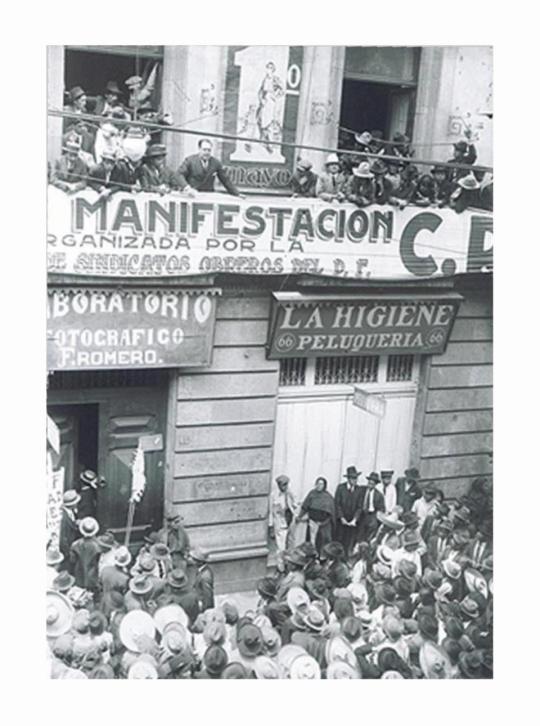
¡Viva Cristo Rey y Nuestra Señora de Guadalupe!
¡Muera la Revolución!
#Cristero#Cristiada#cristero war#cristeros#viva cristo rey#crusades#Deus Vult#catholic#Traditional Catholicism#traditional catholic#Traditional Mass#mexico
13 notes
·
View notes
Photo
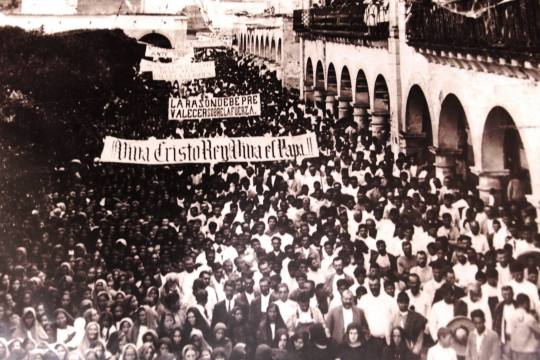
¡Viva Cristo Rey! ¡Viva el Papa!
September 16, 1926.
During the celebrations of Independence Day, thousands of Catholics took the streets of San Miguel el Alto, Jalisco, to protest the persecution of the Church by the judeo-masonic government of Plutarco Elías Calles.
There is nothing the Mexican government—or any other government in the world—fears the most than the organized and brave Catholic faithful fighting for Our Lord and His Church.
¡Viva Cristo Rey y Nuestra Señora de Guadalupe!
#Cristero#Cristiada#cristeros#viva cristo rey#cristero war#catholic#traditional catholic#Traditional Mass#mexico#Deus Vult
6 notes
·
View notes
Photo
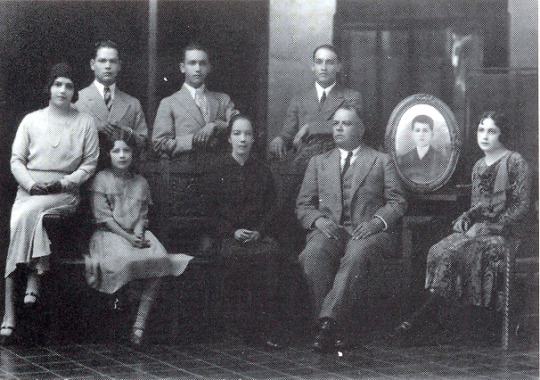
Family of St. José Sánchez del Río, the Cristero martyr and standard-bearer of General Luis Guízar Morfín
A little known fact is that St. José’s brothers also fought bravely in the Mexican crusade for Christ the King and His Church.
¡Viva Cristo Rey y sus mártires!
#Cristero#Cristiada#cristero war#cristeros#viva cristo rey#st. jose sanchez del rio#mexico#catholic#traditional catholic#Traditional Mass#Deus Vult
19 notes
·
View notes
Photo

Mid-1920′s Common Mexican Catholic Scene
¡Viva Cristo Rey y Nuestra Señora de Guadalupe!
54 notes
·
View notes
Photo

Our Lord Jesus Christ preaches to All Mexico: to every race, every social class, every vocation, every state of life.
¡Viva Cristo Rey y Nuestra Señora de Guadalupe!
#catholic#traditional catholic#mexico#mexican#christ the king#viva cristo rey#Cristero#cristero war#cristeros
21 notes
·
View notes
Photo
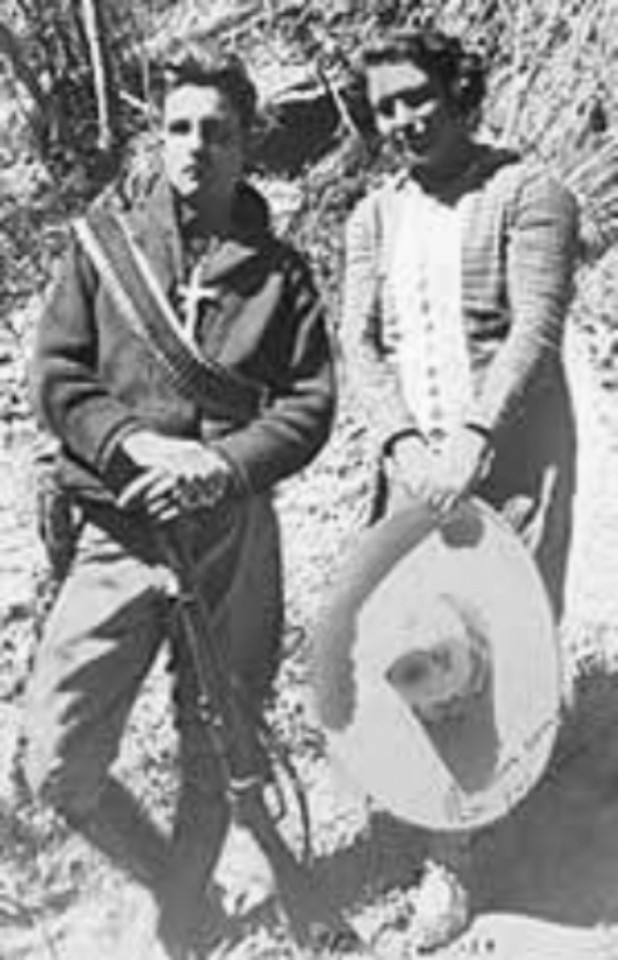
Mexican Youth sacrificed everything they had, even their lives, to Christ the King and His Church
In the picture, a young Cristero soldier besides a young brigadist from the Female Brigades of Saint Joan of Arc.
¡Viva Cristo Rey y Nuestra Señora de Guadalupe!
#catholic#Cristero#Cristiada#cristero war#cristeros#viva cristo rey#Traditional Catholicism#Traditional Mass#traditional catholic#mexico#christ the king#Deus Vult
6 notes
·
View notes
Photo

A Franciscan Martyr of the Cristero War
Fray Junípero Vega professed his solemn vows in February 10, 1905, in the state of Querétaro. With franciscan humility he dedicated his life to prayer, counseling the novices of the Order, serving the sick and poor, and above all, he spent hours every day saving of souls in the confessionary.
During Plutarco Elías Calles’ government and persecution of the Church, Fray Junípero was sent to prison and then freed many times, until he was arrested by the police in La Piedad, Michoacán. From this place he was taken to the nearby train tracks, between the towns of Yurécuaro and Ecuandureo, where he was martyred via firing squad by the civil authorities in February 6, 1928. There was no reason for his execution, except the barbaric hate of Christ and His Church that the judeo-masonic revolutionary government professed.
Fray Junípero Vega’s canonization process begun in 1998.
¡Viva Cristo Rey y sus mártires!
#Cristero#Cristiada#cristero war#cristeros#viva cristo rey#catholic#Traditional Catholicism#traditional catholic#Traditional Mass#franciscan#monk#monasticism#catholic saints#Martyrs
15 notes
·
View notes
Photo

An Allegory of the Catholic Church in Mexico during the Persecution of the Revolutionary Government
This picture was produced and distributed during the presidency of Plutarco Elías Calles and the Cristero War.
It reads "Escena de Viernes Santo en pleno siglo XX" (A scene of Good Friday in the 20th century.)
Our Lord Jesus Christ represents the Mexican clergy, as He wears a priest’s cassock.
To the left of Our Lord we can see Luis Morones, socialist union leader and Secretary General of the corrupt CROM, the most important federation of labor unions whose militants served as anti-catholic thugs in big cities.
Next we have Álvaro Obregón and Plutarco Elías Calles, tying Our Savior and his Church with crude ropes. Both men took the fiercest anti-catholic principles of the Mexican Revolution, wrote them into laws, and started the bloodiest persecution our nation has lived.
Finally we have José Manuel Puig wearing a masonic apron; he was a politician that had different roles during the 1920s presidencies, but contributed to the persecution mostly in the field of Education: he wrote the decrees that prohibited religious education in public and private schools, outlawed priests and nuns working as teachers, and forbid any public expression of catholicism, like crucifixes in classrooms or naming institutions in honor of Saints.
¡Viva Cristo Rey y Nuestra Señora de Guadalupe!
#Cristero#cristero war#cristeros#Cristiada#viva cristo rey#catholic#Traditional Catholicism#traditional catholic#anti-christian#anti-catholic#mexico
7 notes
·
View notes
Photo

Priests on the Cristero Front Lines
Two kind of priests could be found in the ranks of the Cristero armies: first, very few in number, those who took off their cassock, grabbed a rifle, and transformed into fierce soldiers, even generals; the second ones were humble parish priests turned into chaplains without military rank or authority, and most of the times, they did not even had weapons during combat.
Fr. Ramón Pérez Viramontes (AKA Raymundo Peña), in the picture seating alongside Cristero General Luis Ibarra, was one of these brave chaplains.
Tirelessly, and wherever he accompanied the soldiers of Christ the King, Fr. Pérez baptised children, married couples, and saved souls with the Sacraments. He also prayed the Holy Rosary during the long marches, night and day, under the scorching sun or the cold rain.
This holy priest fulfilled his God-given vocation in many battles. One of them was the Battle of Talpita Canyon, in which 80 Cristeros defeated 250 federal soldiers; the Catholic warriors were outnumbered and outgunned (as they were most of the time), but compensated this material inferiority by setting an ambush in said canyon to then fight a demoralized opponent.
Fr. Pérez had a pistol with him during the battle, but did not shoot once, not even when he was almost captured by the enemy.
¡Viva Cristo Rey y sus Santos Sacerdotes!
#Cristero#Cristiada#cristero war#cristeros#viva cristo rey#catholic#traditional catholic#crusades#Deus Vult#mexico#catholic priest#vocation
5 notes
·
View notes
Photo
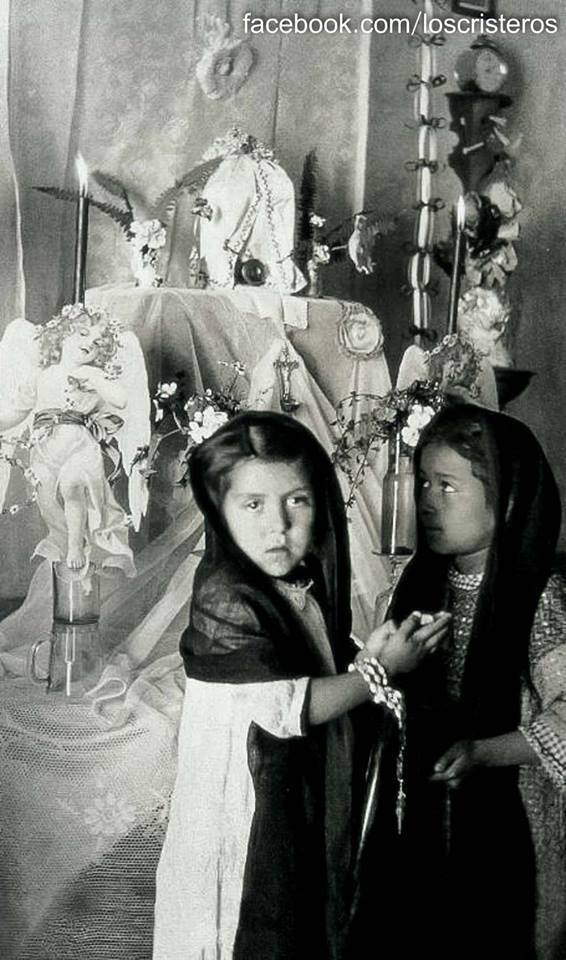
Even the youngest had their place in the Cristero War
Socorro and Carmela Cosío—nieces of Juanita Cosío, a strong supporter and collaborator of the Cristeros—guard and accompany Our Lord in the Eucharist before a clandestine altar in their home.
Valparaíso, Zatecas.
¡Viva Cristo Rey y Nuestra Señora de Guadalupe!
#Cristero#Cristiada#cristero war#cristeros#viva cristo rey#Deus Vult#catholic#catholicism#Traditional Catholicism#traditional catholic#eucharist#mexico
4 notes
·
View notes
Photo

The Holy Sacrifice of the Mass is the most important moment of our lives
Holy Mass celebrated at the top of a hill in Atotonilco El Alto, Jalisco.
¡Viva Cristo Rey y Santa María de Guadalupe!
#Cristero#Cristiada#cristero war#cristeros#viva cristo rey#Deus Vult#crusades#catholic#Traditional Catholicism#traditional catholic#Traditional Mass#mexico#Latin Mass#holy mass
60 notes
·
View notes